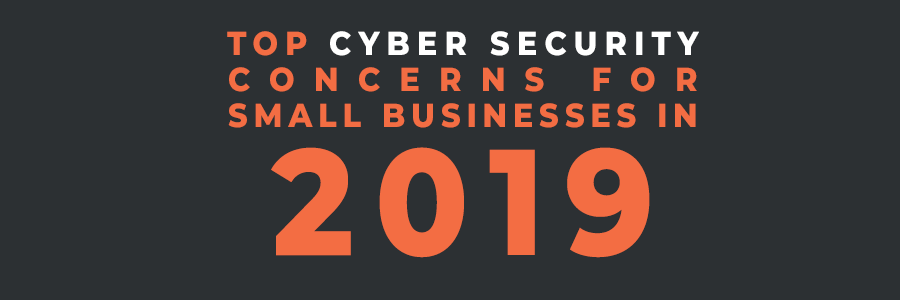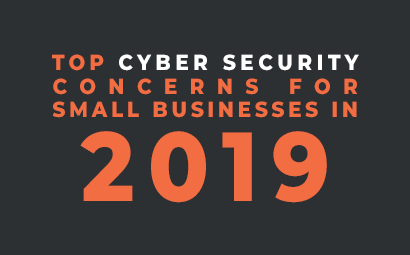
As we enter into a new year, security especially in the cyber realm has become increasingly more complex. Concerns and breaches have been on the rise from ransomware variants like WannaCry through to organisations such as Facebook, British Airways or Uber declaring massive breaches; which has brought cybersecurity into the mainstream focus in 2018.
This is likely to grow considerably as we move into 2019, due for two reasons, financial gain by organised criminals who have recognised for a few years now that this is a very lucrative opportunity but also the disruption that can be caused through this activity from countries with certain political agendas.
It is also not just restricted to large companies as we have seen an increasing number of smaller organisations being “hit” as generally, their defences are much less advanced than larger businesses.
With paranoia increasing is it any wonder that the adoption of new technologies in some cases is on hold due to not knowing what the negative side effect could be.
We now list the top 15 concerns and remedies into 2019 from the research we have done as follows:
1. Ransomware

2. Malware
What is it? Malware is an all-encompassing term for a variety of cyber threats including Trojans, viruses, and worms. Malware is simply defined as code with malicious intent that typically steals data or destroys something on the computer.
How does it work? Malware is most often introduced to a system through email attachments, software downloads or operating system vulnerabilities.
How can I prevent it? The best way to prevent malware is to avoid clicking on links or downloading attachments from unknown senders. This is sometimes done by deploying robust and updated firewalls, which prevent the transfer of large data files over the network in a hope to weed out attachments that may contain malware.
It’s also important to make sure your computer’s operating system (e.g. Windows, Mac OS X, Linux) uses the most up-to-date security updates. Software programmers update programs frequently to address any holes or weak points. It’s important to install these updates as well to decrease your own system’s weaknesses.
3. Risk of Shadow IT systems and bad housekeeping
What is it? Shadow IT refers to information technology projects that are managed outside of, and without the knowledge of, the IT department.
The more legacy applications and access-points within the business make things such as Shadow IT more difficult to control and even identify. In both cases, these are an easy attack surface with significant oversight, internal politics and budget challenges, and were previously seen as a lower priority for resolution. However, there has been both an increased awareness of the opportunity for attack via this route, and an increase in the number of attacks, which will accelerate in 2019.
4. Phishing

What is it? Often posing as a request for data from a trusted third party, phishing attacks are sent via email and ask users to click on a link and enter their personal data. Phishing emails have gotten much more sophisticated in recent years, making it difficult for some people to discern a legitimate request for information from a false one. Phishing emails often fall into the same category as spam but are more harmful than just a simple ad.
How does it work? Phishing emails include a link that directs the user to a dummy site that will steal a user’s information. In some cases, all a user has to do is click on the link.
How can I prevent it? Verify any requests from institutions that arrive via email over the phone. If the email itself has a phone number, don’t call that number, but rather one you find independently online or within documentation you’ve received from that company.
Most companies are adamant that they will not ask for personal information via email. At the same time, most companies strongly recommend that users not make sensitive information available. While it might seem like a pain to make a phone call to find out if something is legitimate, the hassle of having your Social Security number and/or Financial Information was stolen is much worse
5. GDPR is still a future pain to come.
Although the 25th May 2018 has come and gone, many organisations are breathing a sigh of relief having put all the necessary measures in place for compliance. However, is everything really ok? We are still yet to see any GDPR penalties given out. When this happens organisation are going to start taking this way more seriously and correcting the things they really need to do. Organisations such as Facebook and BA who have suffered a breach will face a fine but this depends on which side of the 25th May 18 deadline they sit.
6. Password Attacks
What is it? A password attack is exactly what it sounds like: a third party trying to gain access to your systems by cracking a user’s password.
How does it work? This type of attack does not usually require any type of malicious code or software to run on the system. There is software that attackers use to try and crack your password, but this software is typically run on their own system. Programs use many methods to access accounts, including brute force attacks made to guess passwords, as well as comparing various word combinations against a dictionary file.
How can I prevent it? Strong passwords are really the only way to safeguard against password attacks. This means using a combination of upper and lower case letters, symbols, and numbers and having at least eight characters or more. As a point of reference, an attacker using a brute force password cracking program can typically unlock a password with all lowercase letters in a matter of minutes. It’s also recommended not to use words found in the dictionary, no matter how long they are; it just makes the password attacker’s job easier.
It’s also good practice to change your passwords at regular intervals. If a hacker is able to obtain an older password, then it won’t work because it’s been replaced!
7. Denial-of-Service (DoS) Attacks
What is it? A DoS attack focuses on disrupting the service to a network. Attackers send high volumes of data or traffic through the network (i.e. making lots of connection requests), until the network becomes overloaded and can no longer function.
How does it work? There are a few different ways attackers can achieve DoS attacks, but the most common is the distributed-denial-of-service (DDoS) attack. This involves the attacker using multiple computers to send the traffic or data that will overload the system. In many instances, a person may not even realise that his or her computer has been hijacked and is contributing to the DDoS attack.
Disrupting service can have serious consequences relating to security and online access. Many instances of large-scale DoS attacks have been implemented as a sign of protest toward governments or individuals and have led to severe punishment, including jail time.
How can I prevent it? Unless your company is huge, it’s rare that you would be targeted by an outside group or attacker for a DoS attack. Your site or network could still fall victim to one, however, if another organisation on your network is targeted.
The best way to prevent an additional breach is to keep your system as secure as possible with regular software updates, online security monitoring and monitoring your data flow to identify any unusual or threatening spikes in traffic before they become a problem. DoS attacks can also be perpetrated by simply cutting a cable or dislodging a plug that connects your website’s server to the internet, so due diligence in physically monitoring your connections is recommended as well.
8. Having a false sense of security
"Because security is such a broad concern, the primary threat that should be top of mind is a false sense of security. Given threat profiles for cybersecurity and the need to protect intellectual property and financial assets etc., there is no single investment or effort that allows you to 'check the box.' Comprehensive visibility to your technology footprint—from device to application destination—is a key capability required to enable you to be successful in understanding your security position and identify new attacks."
9. “Man in the Middle” (MITM)
 What is it? By impersonating the endpoints in an online information exchange (i.e. the connection from your smartphone to a website), the MITM can obtain information from the end user and the entity he or she is communicating with.
What is it? By impersonating the endpoints in an online information exchange (i.e. the connection from your smartphone to a website), the MITM can obtain information from the end user and the entity he or she is communicating with.
For example, if you are banking online, the man in the middle would communicate with you by impersonating your bank, and communicate with the bank by impersonating you. The man in the middle would then receive all of the information transferred between both parties, which could include sensitive data, such as bank accounts and personal information.
How does it work? Normally, a MITM gains access through a non-encrypted wireless access point (i.e. one that doesn’t use WAP, WPA, WPA2 or other security measures). They would then have access to all of the information being transferred between both parties.
How can I prevent it? The best way to prevent them is to only use encrypted wireless access points that use WPA security or greater. If you need to connect to a website, make sure it uses an HTTPS connection or, for better security, consider investing in a virtual private network (VPN). HTTPS uses certificates that verify the identity of the servers you’re connecting to using a third-party company such as VeriSign, while VPNs allow you to connect to websites through virtual private networks.
10. Large-scale data breaches on critical national infrastructure
A recent parliamentary committee warned that critical national infrastructure is at risk from cyber attackers. The National Cyber Security Centre also recently warned that states hostile to Britain would likely target the infrastructure of Britain.
While high profile real-world examples of these sorts of attacks have been relatively scarce (especially in Britain - with only WannaCry and NotPetya coming close to date) some experts are warning that 2019 could see intra-state rivalries become more realised in the cyber realm.
Even taking hostile states out of the equation, attackers motivated by money might see weakness in the country's current approach to critical national infrastructure and hit it for financial reasons before it's fixed.
James Wickes, CEO and co-founder of Cloudview, said that attacks on infrastructure could also be linked to the increase in Internet-connected devices.
11. Drive-By Downloads
What is it? Through malware on a legitimate website, a program is downloaded to a user’s system just by visiting the site. It doesn’t require any type of action by the user to download.
How does it work? Typically, a small snippet of code is downloaded to the user’s system and that code then reaches out to another computer to get the rest and download the program. It often exploits vulnerabilities in the user’s operating system or in different programs, such as Java and Adobe.
How can I prevent it? The best way is to be sure all of your operating systems and software programs are up to date. This lowers your risk of vulnerability. Additionally, try to minimize the number of browser add-ons you use as these can be easily compromised. For example, if your computers don’t need Flash or the Java plug-in, consider uninstalling them.
12. Employees' lack of cyber security skills
"People still represent the biggest security risk for most companies. I spend an inordinate amount of time worrying what folks click on in emails and on websites. I also worry about GDPR and all of the shifting compliance rules. Trying to manage all the new rules is extremely complex when they change every couple of months. Finally, I have a fear of interconnected identity sharing: the hotel Wi-Fi, the Netflix account on the tablet over our corporate networks, the phone in the coffee shop, and all the ways we interact with networks on devices that live both inside and outside our corporate network."
13. Rogue Software
What is it? Malware that masquerades as legitimate and necessary security software that will keep your system safe.
How does it work? Rogue security software designers make pop-up windows and alerts that look legitimate. These alerts advise the user to download security software, agree to terms or update their current system in an effort to stay protected. By clicking “yes” to any of these scenarios, the rogue software is downloaded to the user’s computer.
How can I prevent it? The best defence is a good offense—in this case, an updated firewall. Make sure you have a working one in your office that protects you and your employees from these types of attacks. It is also a good idea to install a trusted anti-virus or anti-spyware software program that can detect threats like rogue software.
As with most types of crime, vigilance is one of the keys to prevention. As cybercriminals become more sophisticated and more transactions migrate online, the number of threats to people and businesses will continue to grow. Prepare yourself and your business by taking the time to secure your systems and make cybersecurity a priority.
14. Better and smarter Internet of Things (IoT)

"The biggest fear for an IT manager is that I talk to is the encroachment of IoT (Internet of Things) equipment into their organizations. So is this an irrational fear? Hardly!
"The fear comes from the knowledge that many of these devices have hard coded firmware where the passwords are common to the device, but not the user of the device. Couple this with the fact that organisations can't simply go in and change the password to make it unique and thereby less exploitable, and you've got some real challenges. The conundrum that IT managers now face is how to protect the organization while at the same time introducing new technology into the workplace, which will make employees' lives easier and make the business, as a whole, more efficient."
15. Cybersecurity in the boardroom

A decade, perhaps two decades, late for some organisations, cybersecurity is now considered a key business risk by the board. 2019 will see this trend accelerate as boards demand clarity and understanding in an area that was often devolved as a sub-component of the CISO’s role, and was not really a major topic for the boardroom.
Just as pollution was a side effect of the Industrial Revolution, so are the many security vulnerabilities that come with increased internet connectivity. Cyber-attacks are exploitations of those vulnerabilities.
For the most part unavoidable, individuals and businesses have found ways to counter cyber-attacks using a variety of security measures and just common sense. Regardless of how safe a business feels it and its systems are, however, everyone must still be aware of and vigilant toward online threats.
This is not definite as there will be more types of “new” compromises in 2018, and therefore as they say the best form of defence is offence, and to ensure you are on the right path to minimising these threats, it is advisable to have an organisation assist in these areas.
If you do need help regarding the above even if it's just simple advice get in touch. We are always happy to help.





You must be logged in to post a comment.